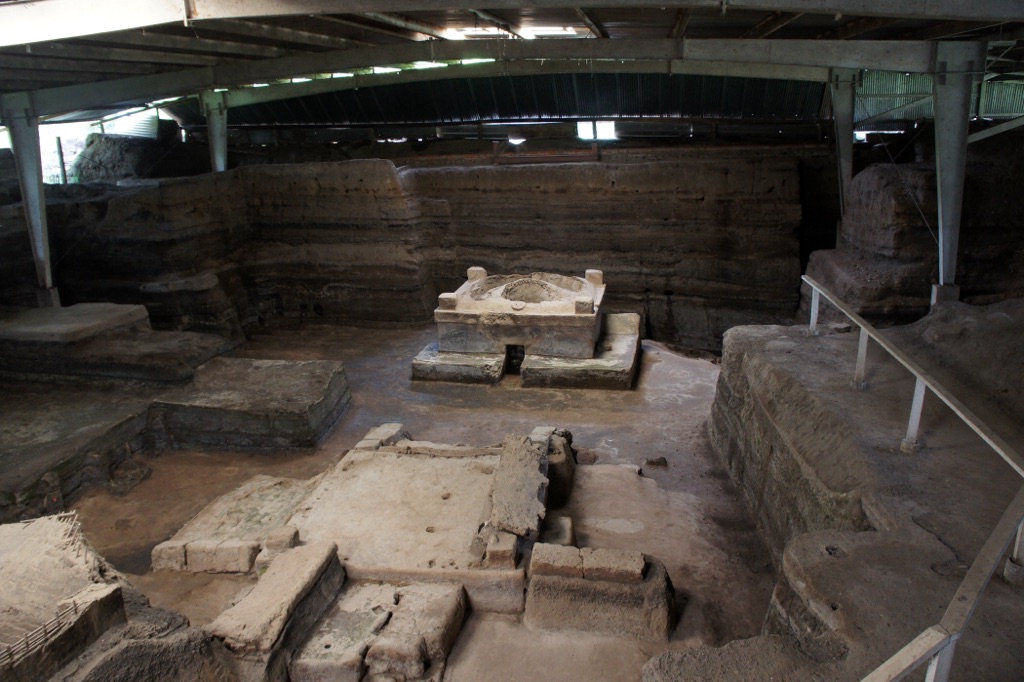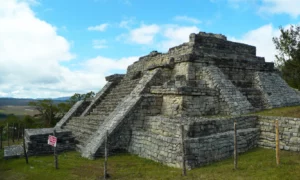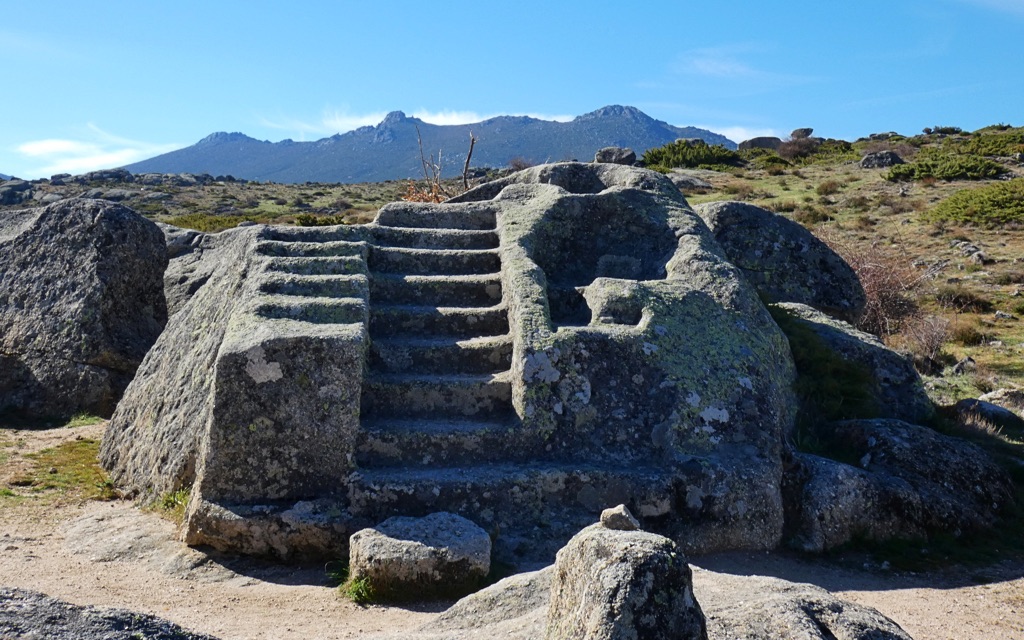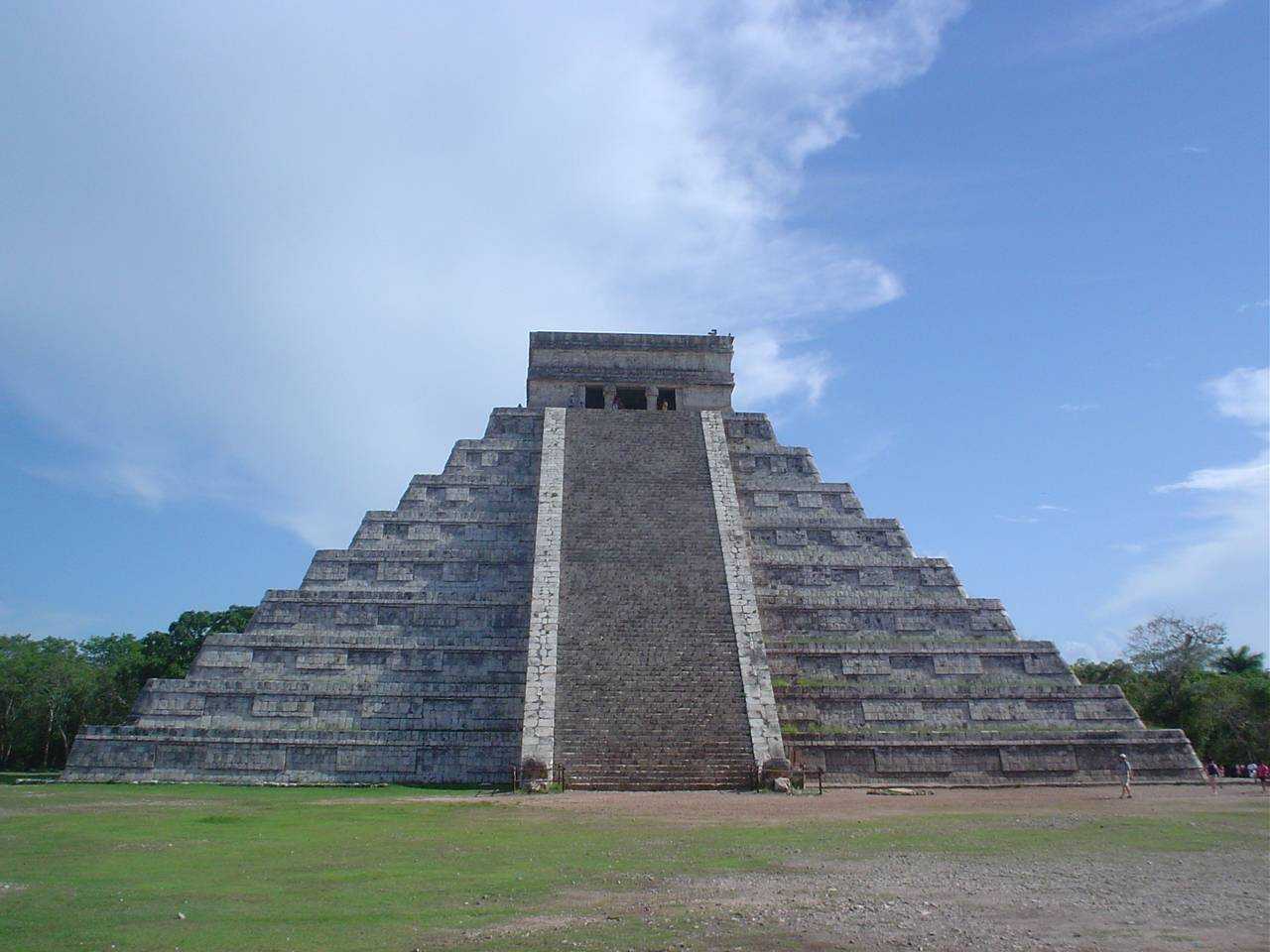Chichen Itza stands as a monumental testament to the ingenuity and artistry of the Maya civilization. This ancient city, nestled in the Yucatan Peninsula of Mexico, was a major focal point for the Maya people. It thrived from around 600 AD to the 1200s. Today, it’s recognized as a UNESCO World Heritage Site and one…
The Ancient Maya
Ancient Maya Historical Sites and Ruins
Maya Mythology
Gods and Goddesses
| Kukulkan |
| Chaac |
| Ix Chel |
| Ah Puch |
| Itzamna |
Ancient Maya Artifacts
| Chac Mool |

Joya de Ceren
The Joya de Ceren Archaeological Site in El Salvador is a remarkably well-preserved snapshot of daily life in a pre-Columbian Mesoamerican farming community. Often referred to as the “Pompeii of the Americas,” it was buried under a volcanic eruption around 600 AD. The site provides invaluable insights into the domestic, religious, and social structures of…

Caracol
Caracol is a significant ancient Maya archaeological site located in the Cayo District of Belize. Positioned approximately 40 kilometers south of Xunantunich and the town of San Ignacio, and 15 kilometers from the Macal River, it occupies the Vaca Plateau at an elevation of 500 meters above sea level. Initially thought to be a tertiary center, Caracol emerged as one of the most crucial regional political centers in the Maya Lowlands during the Classic Period. The site spans roughly 200 square kilometers, surpassing the area of present-day Belize City and supporting a population more than twice its size.

Chinkultic
Chinkultic is a pre-Columbian archaeological site located in the Chiapas region of Mexico. It’s a lesser-known gem of the Maya civilization, boasting a wealth of structures, including pyramids, plazas, and an ancient ball court. The site offers a unique glimpse into the lives and rituals of the Maya people, with its hieroglyphic inscriptions and stelae providing valuable insights into their complex society. Chinkultic stands out for its strategic location, which allowed it to control local trade routes and water resources, making it an important player in the regional power dynamics of the Maya world.

Yaxuná
Yaxuná is an ancient Maya city located in the Yucatan Peninsula of Mexico. It boasts a long history, spanning the Preclassic to the Postclassic periods. The site is particularly known for its large central pyramid and extensive network of sacbeob, or white roads, connecting it to other Maya cities, including the famous Chichen Itza. Yaxuná’s strategic location and its evolving political relationships reflect the complex socio-political dynamics of the ancient Maya civilization.

Altar de Sacrificios
The Altar de Sacrificios is an ancient Maya archaeological site located in the Petén department of Guatemala. It sits at the junction of the Pasión River and the Chixoy River, a strategic position that once facilitated control over trade routes. The site is known for its ceremonial architecture, including several temples, plazas, and an altar that gives the site its name. The discovery of the Altar de Sacrificios has provided valuable insights into the Maya civilization, including their religious practices, social structure, and interactions with neighboring cultures.

